Growing Blog
The Complete Guide To Starting A Mushroom Farm
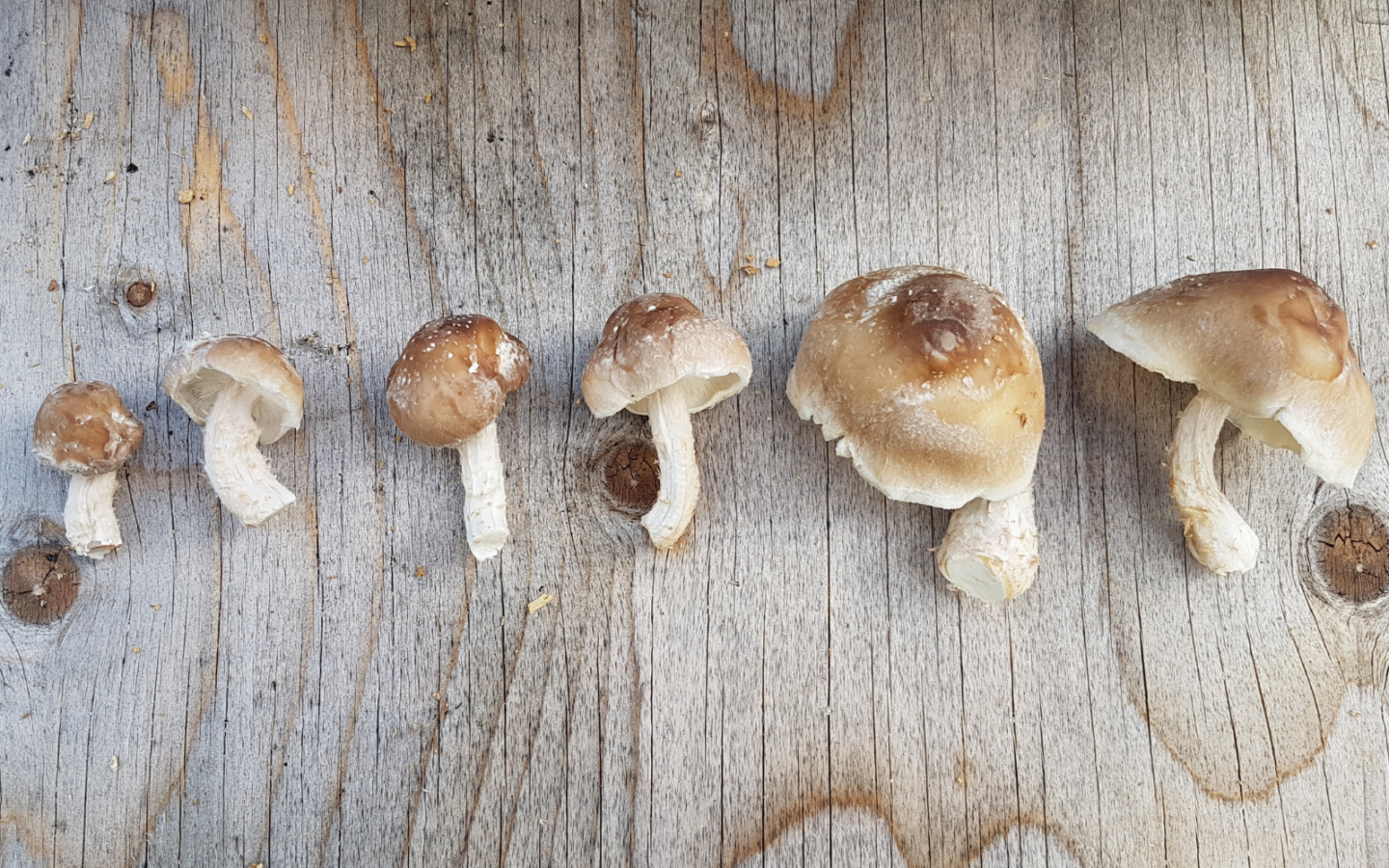
You want to be a mushroom farmer, and I totally understand why.
Learning how to grow mushrooms for any reason can be extremely rewarding and engaging. They’re just so interesting!
The more you practice growing mushrooms, the more there is to learn. Your journey will be long, because there’s an endless variety of new techniques and experiments to play with along the way.
But as your skills advance, and you start to grow more mushrooms than you can handle, you may start to wonder how you can turn your small scale hobby into a fully operational mushroom farming business.
And you might have a ton of questions.
- What does a mushroom farm even look like?
- How much is it going to cost me?
- What kind of set up will I need?
- How many pounds of mushrooms can I really grow?
- Can I sell them?
The answers to these questions will without a doubt depend on your own personal situation, but I wanted to provide a rough guide to help the would-be grower understand what it takes to go from a fledgling spore shooter to a full on mushroom farmer.
Hopefully it can help you decide whether or not mushroom farming is right for you.
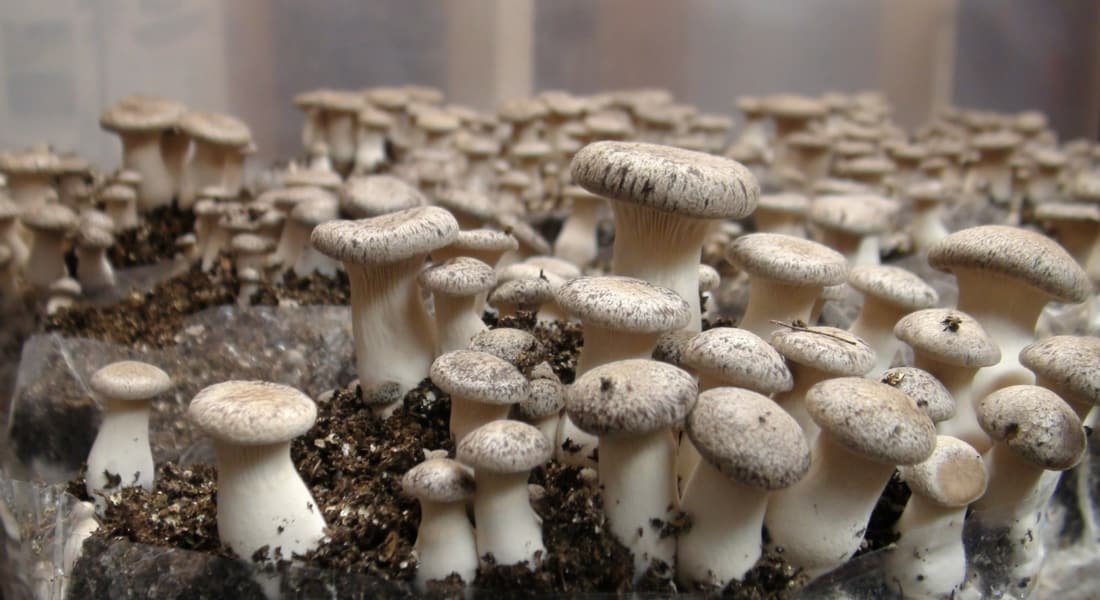
Parts of a Mushroom Farm
Growing mushrooms from spore to fruit is a rather complex process which requires a lot of things to be done just right in order to achieve consistent and predictable results. A fully operational mushroom farm has a lot of moving parts which need to be working together and firing on all cylinders.
So, to help simplify things a bit, let’s break the mushroom farm down into its three basic parts:
- The Laboratory,
- The Preparation Area, and
- The Grow Room.

The Lab
This is where it all begins, and is usually the hardest part of the growing cycle for new cultivators to understand and master. Mushroom mycelium needs a moist and nutrient rich growing medium in order to develop without inhibition, such as a jar full of grain or a agar filled petri-dish.
Unfortunately, these environments are also ideal growing conditions for competing bacteria and mold. If these undesirables take hold, they will usually outpace the growth of, and eventually defeat, the intended mushroom mycelium.
The cultivator therefore needs to provide a “safe space”, such as a laboratory, in order handle and propagate mushroom cultures.
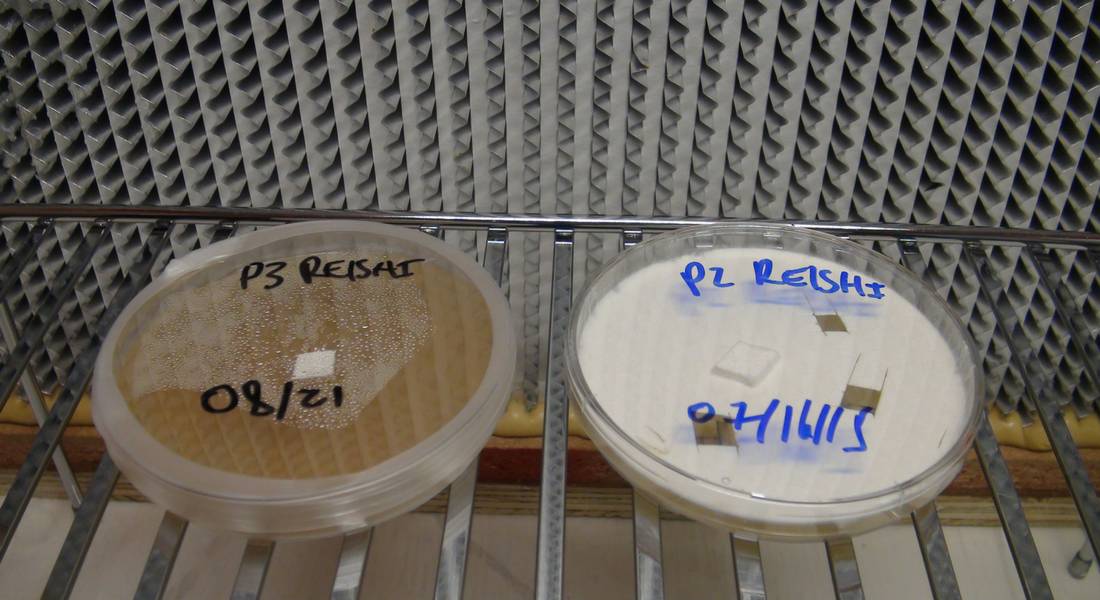
The lab should be an area sealed off from the rest of the operation. It should have smooth floors and smooth walls, easily cleaned with a light bleach solution. The lab table and shelf should also be smooth and washable. Basically, anything that enters the laboratory should be under scrutiny, including the cultivator herself.
The cultivator needs to be prepared to only enter the lab with clean clothes, shoes, hands and hair. Good hygiene is imperative. Generally, it is easier to prevent contaminants from getting in the lab than it is to remove them once they have taken hold.
The cornerstone of a functional laboratory is a well made laminar flow hood. This is essentially a box with a blower fan forcing air through a HEPA filter, providing a clean stream of air in which inoculations, transfers, and other mycological work can safely take place.
Using a laminar flow hood, along with proper sterile techniques is the best defense against molds and bacteria.
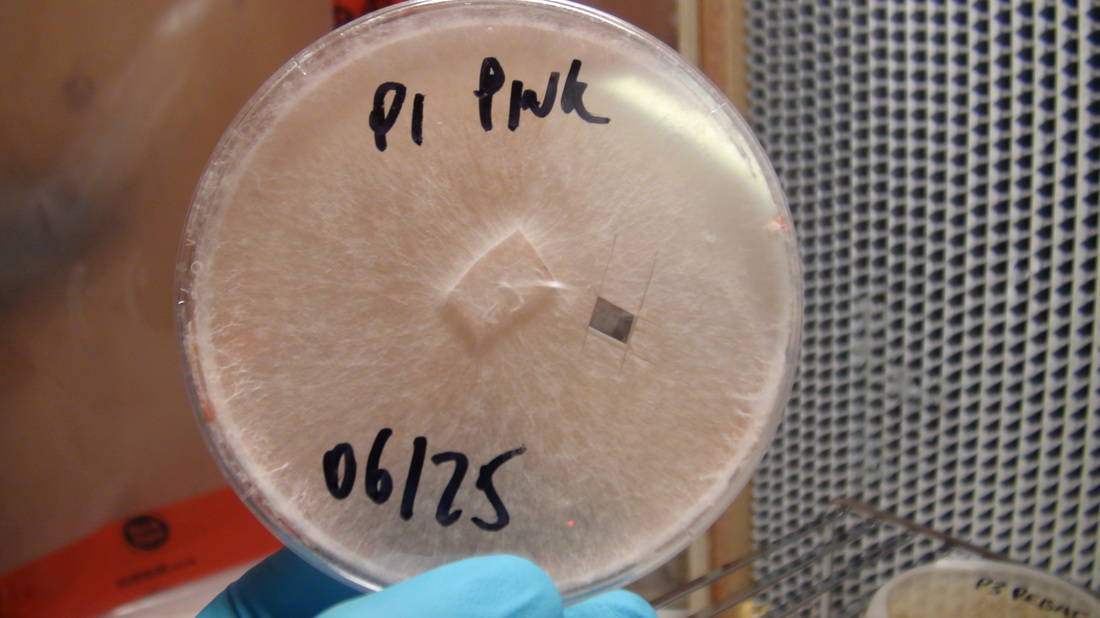
If you do not want to dedicate to converting an entire room into a laboratory, it is also possible to just set up a temporary clean space when you want to do lab work. You could just set up your laminar flow hood in a bedroom or bathroom on a clean table and try and be extra considerate about only exposing agar plates, grain jars and other sensitive materials directly in the stream of the flow.
Worst case scenario, you can try to do all your lab work within the confines of a SAB or “still air box”.
This is an OK option for small scale agar work, but is really difficult when trying to do inoculations of supplemented sawdust blocks of large bags of grain spawn. The SAB is a reasonable option for very small scale growers, but one can expect higher levels of contamination in the long run.
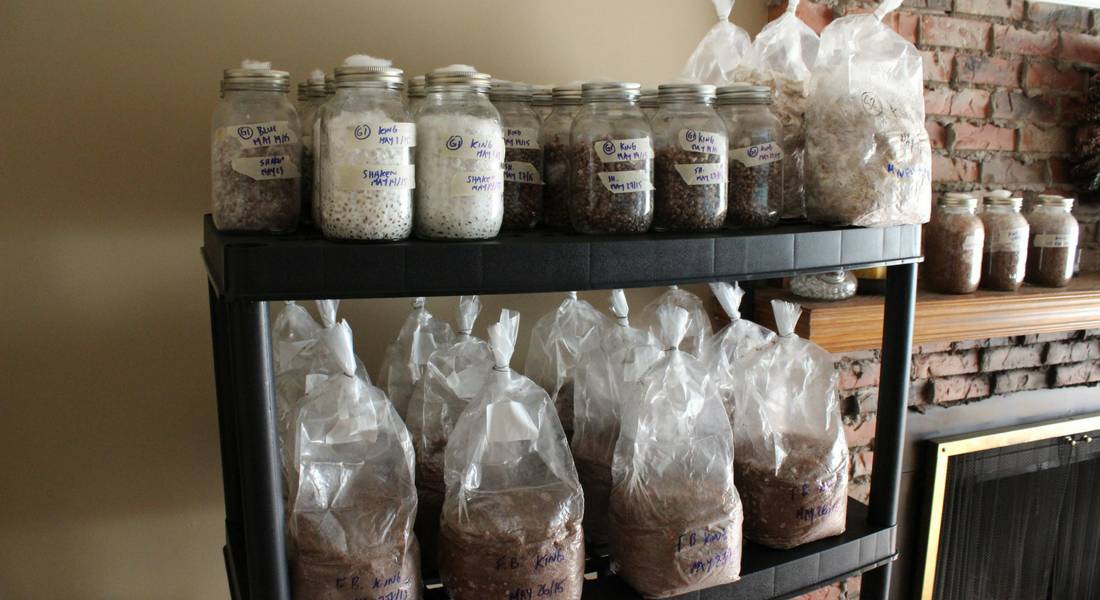
Ditch the Lab?
Of course, it is possible to have a mushroom farm without any lab at all, providing you have no interest in making your own grain spawn. Purchasing pre-made grain spawn is a reasonable choice for the mushroom farmer who just wants to get up and running quickly, without the hassle of dealing with agar cultures, pressure sterilizing grain, and doing clean work in front of a hood. This way, you can simply use the pre-made grain spawn to grow mushrooms on pasteurized straw– skipping the sterilization process all together.
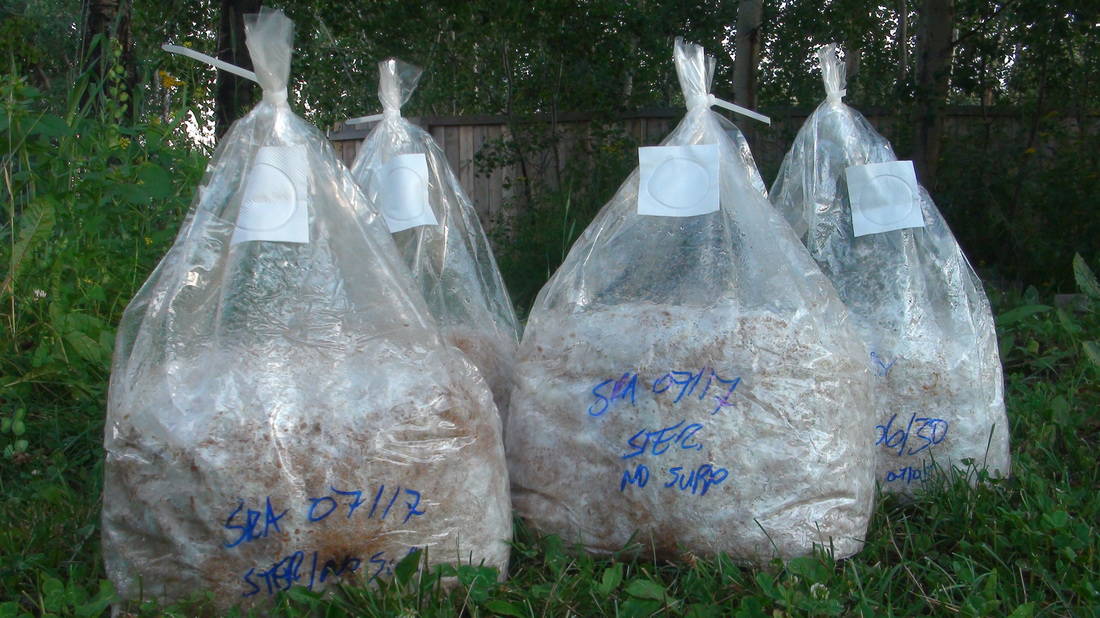
There are advantages to having your own culture library, however. Aside from gaining valuable skills, having a better understanding of the mushroom life cycle and developing your own cultures, making your own spawn might also be cheaper over the long run when compared to buying commercial spawn. This will lower your overall operating costs, and help the profitability of your farm.
You have to decide for yourself whether or not it makes sense to manage your own cultures. If you have started as a hobby grower, you likely already have the skills required to grow from agar cultures, in which case it might make good sense to build a lab. If, however, you are starting a farm with no experience at all, it might make more sense to start with commercial spawn.
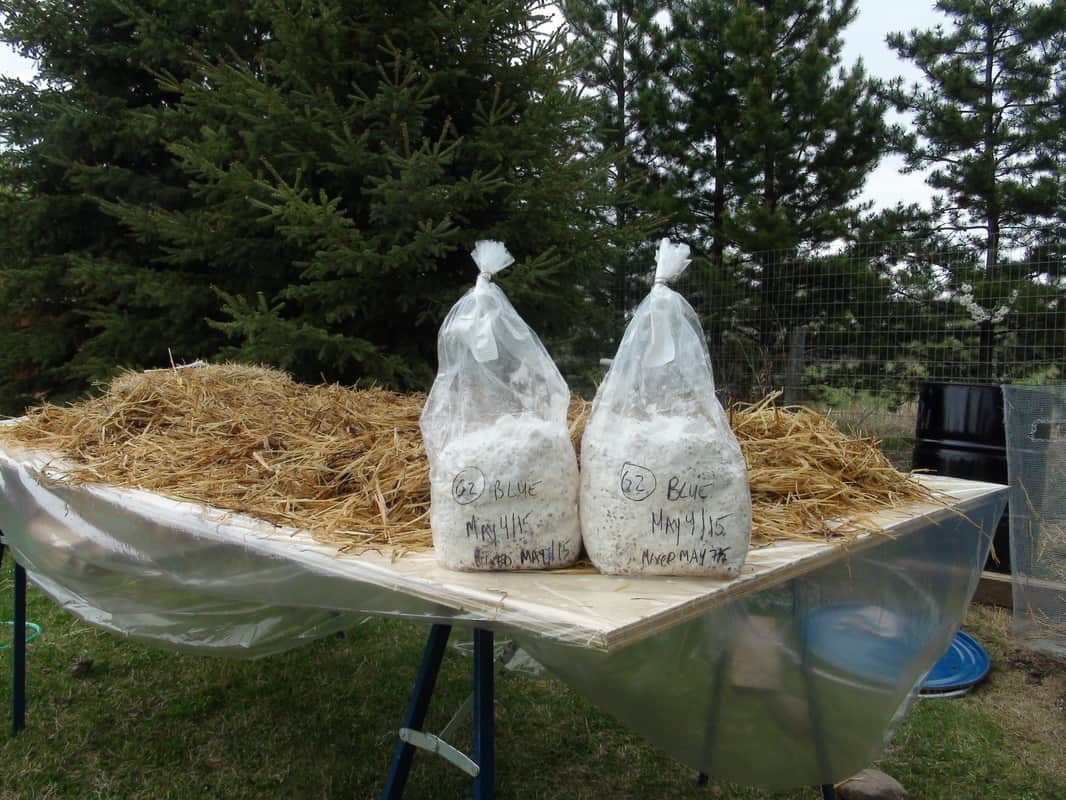
The Prep Area
This is where the grunt work happens. The prep should be relatively clean, but nowhere near is laboratory- level clean necessary. A garage or outdoor shed is a perfectly acceptable location. A few different things happen in the prep area, depending on what method of cultivation you are using on your farm.
If you are making your own grain spawn, the prep area is where you will ready the grains for sterilization. This means rinsing and soaking the grains, simmering them so that they absorb some moisture, and finally, cooling and draining the grains before they go into jars or bags. If you are growing a lot of mushrooms, and making a lot of grain spawn, it is good to have a larger dedicated space for these tasks, rather than using your kitchen or bathtub.
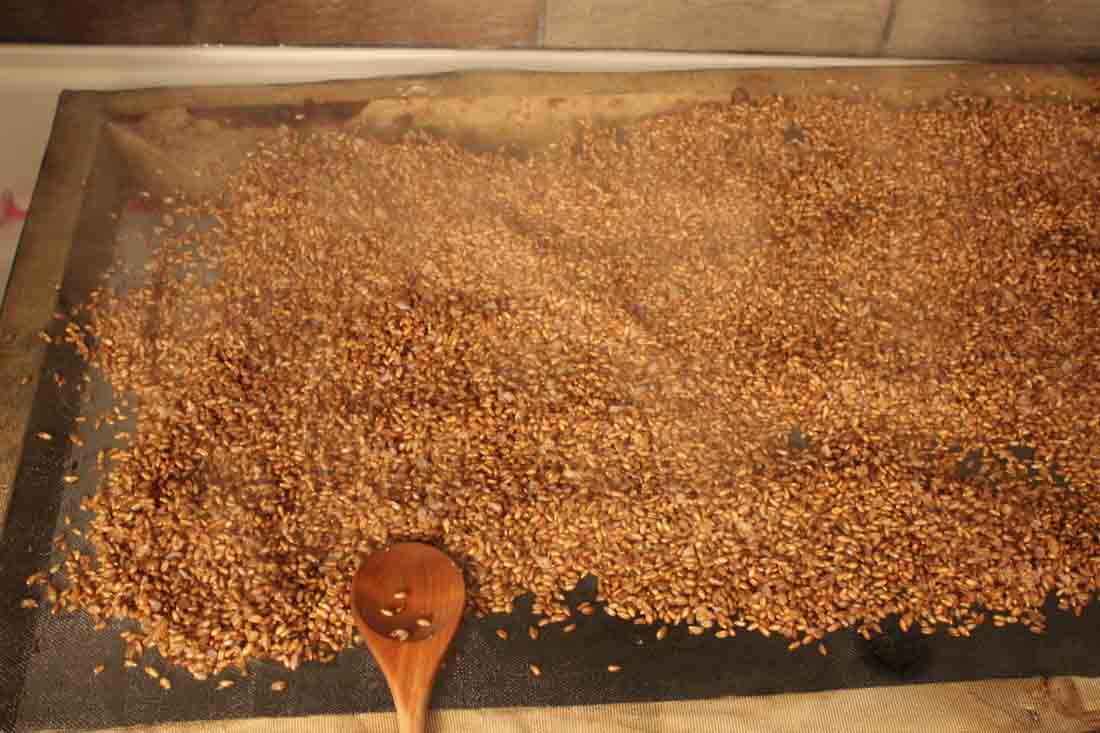
If you are growing mushrooms on supplemented sawdust, you won’t be inoculating the bags in this area- that will instead take place in front of a flow hood. But you can use this area for soaking, mixing, and stuffing the grow bags with substrate. You can also use it for storing your wood pellets, bran, and other supplies. It’s handy to have a scale in the prep area so you can quickly weigh how much supplemented sawdust goes into each bag.
The prep area can also be where you pressure-sterilize your grain or supplemented sawdust.
This can be done on the kitchen stove, but a good pressure sterilizer is usually heavy, big, and loud, so it can be advantageous to have a dedicated space. Keep in mind your safety when using pressure sterilizers. Hot, pressurized steam can be dangerous.
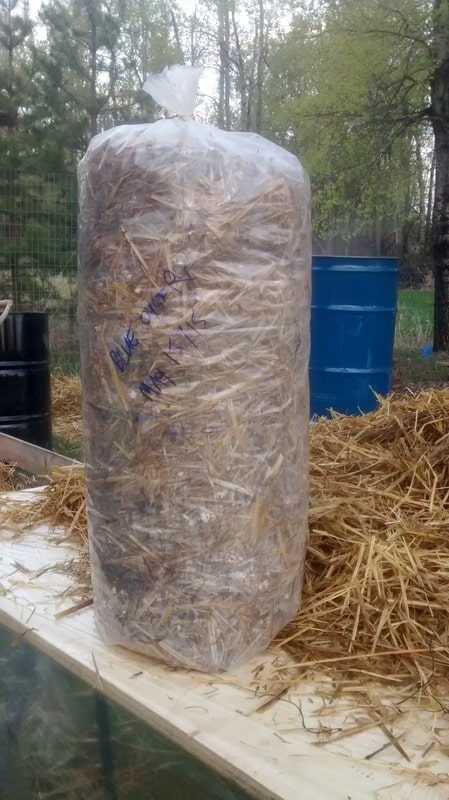
A prep area really shines when you’re growing mushrooms on straw. Straw is messy, and isn’t fun to deal with inside the house. Here, you can set up a 55 gallon drum and propane burner for pasteurizing your straw. Keep in mind that this will need to be done outside, or in a well ventilated area.
Alternatively, you can use an electric-drum pasteurizer, which can be done in a enclosed space, but in my opinion is not as effective.
Inside the prep area, you need to have a large table in order to spead out and cool the straw after pasteurization.
You want the straw to cool quickly so that it is a reasonable temperature for inoculation with grain spawn. Generally, you want to add your spawn to the straw as soon as it is cool enough to do so, and a prep area is a great place to achieve that.
A good prep area will make the farm run smooth and efficiently. As stated before, it is possible to achieve most of the above tasks in a household kitchen, but it does really pay off to have a dedicated space.
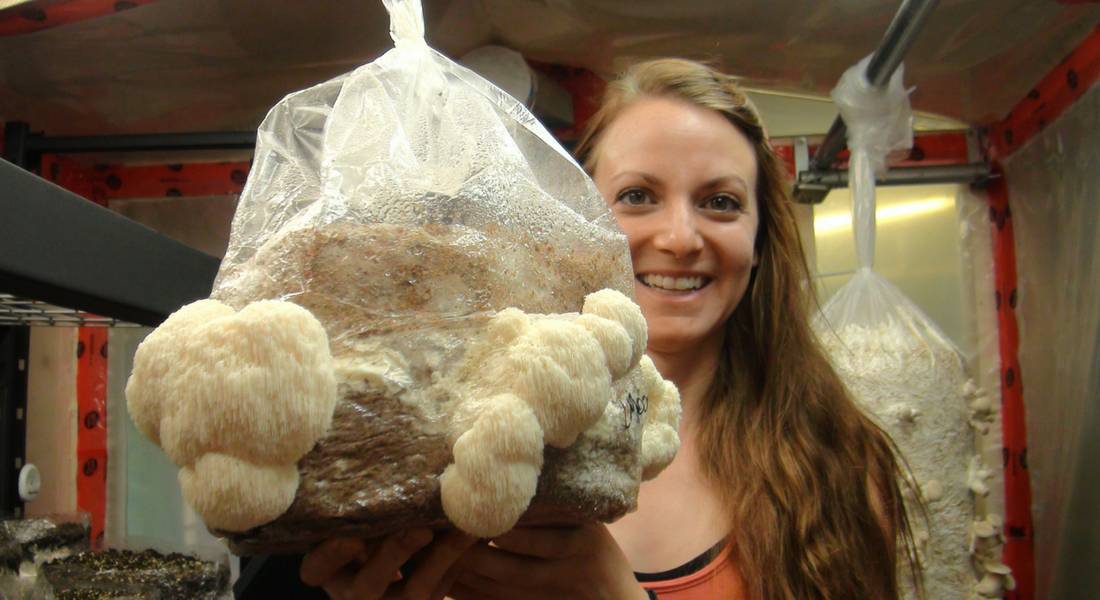
The Grow Room
If the lab is where it all begins, and the prep area is where the grunt work takes place… then the grow room is where the magic happens! The hard work finally pays off and the dedicated cultivator is rewarded with top-notch mushrooms.
Your grow room can vary in size and shape, and should be tailored to fit with the amount of mushrooms you want to produce. Once you practice growing, and know what yields you can achieve, you will have a good idea of what size grow room you want.
The style of grow room you choose also depends highly on the type of mushrooms you choose to grow and the way you choose to grow them.
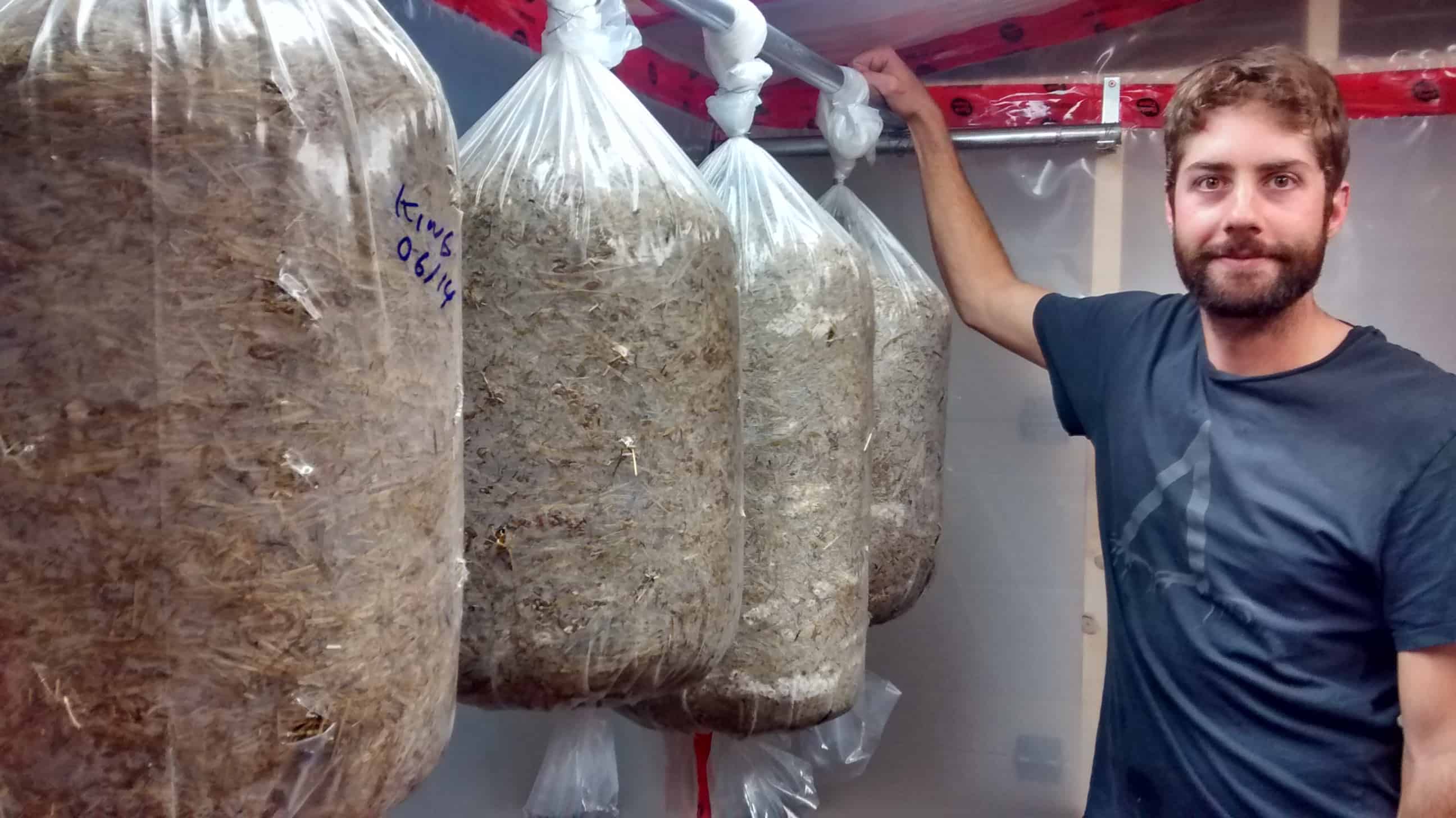
If you are growing on straw logs, you are going to want to have a rigid bar to hang the logs. You can have one long 5-6 ft log, but for smaller operations it is usually better to have two rows, one on top of the other, with smaller grow logs. They are much easier to handle.
If you choose instead to grow your mushrooms using grow bags with supplemented sawdust, you’ll want to use shelves. The light requirements for most mushrooms isn’t near what is required for plants, so there is no reason why you can’t have shelves of mushrooms, with only the top shelf receiving direct light.
Make sure the shelves you choose are not made of material that can harbor molds and decompose, such as wood. Your grow room will be consistently moist, and wooden shelves will eventually lead to contamination problems.
Controlling the Grow Room Environment
At its core, a grow room is just a functional space in a controlled environment. You will want to be able to manage the CO2 levels, the humidity, and the temperature of the space.
Managing the CO2 levels just means that you need a way to add fresh air to the space on a regular basis. Different mushrooms require different levels of fresh air, but in general, all mushrooms need a threshold level of fresh air exchanges in order to grow properly.
Low amounts of fresh air will cause the mushrooms to produce long chewy stems and small caps. Fresh air exchange is usually achieved with a blower fan that brings fresh air in from outside the grow room on a regular basis.
Humidity is possibly the most critical factor that you need to control in the grow room. Because so much fresh air is required, humidity also needs to be constantly added to the grow room for best results. If the humidity is too low, the mushroom fruit bodies can become cracked, or even worse, may fail to form at all. If the humidity is too high, on the other hand, you could run into issues like bacterial blotch and other forms of contamination.
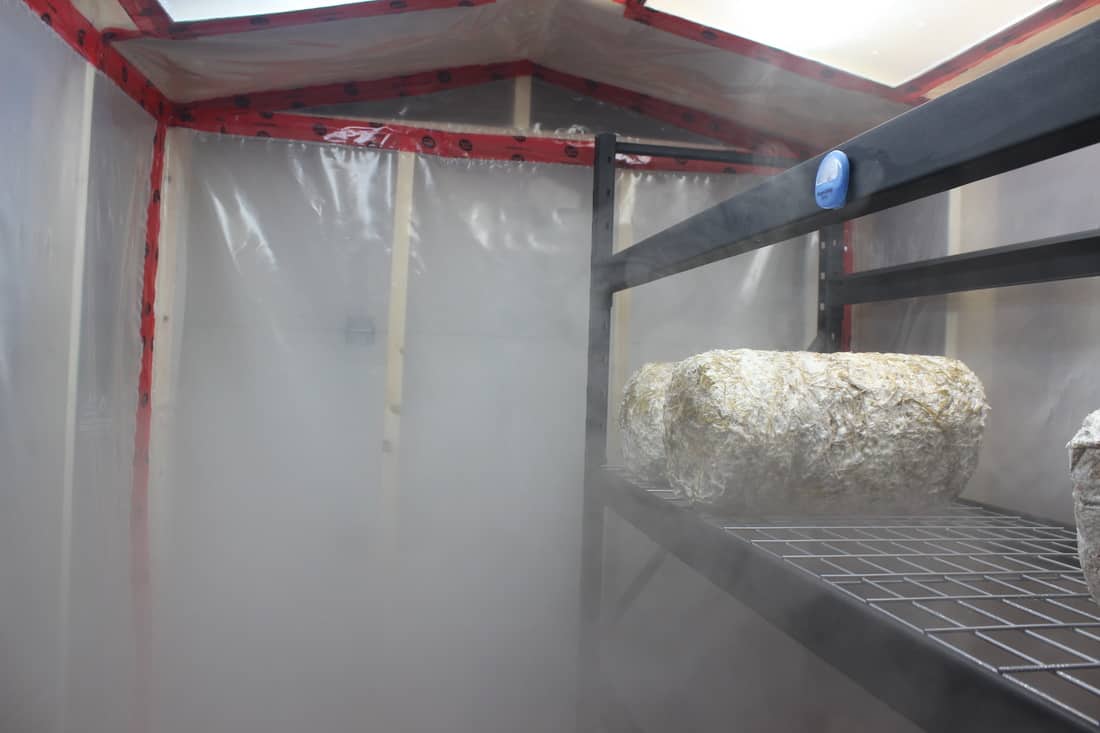
Although there are differences among different species and stages in the growing cycle, a good target to aim for in the grow room is between 85-95% relative humidity. You will need an accurate hygrometer for best results. There are lots of different ways to add humidity to a grow room. One popular method is to simply place an ultrasonic floating disc pond fogger in a bucket full of water and set it on a timer to suit your needs. The water should be changed often.
Temperature is also a critical factor that needs to be controlled to successfully grow great mushrooms. Generally speaking, mushrooms prefer cool, humid environments. Some mushrooms, like the pink or yellow oyster, like it to be a little warmer, but this is the exception rather than the rule. Most mushrooms will grow more robust and meaty fruits if the temperature is kept to about 15-18 deg C during fruiting.
Some mushrooms even need a “cold shock” in order to induce fruiting. This makes sense, as it is a way of tricking the mushrooms into thinking that fall is setting in and it’s time to spread their spores. Keep in mind that air conditioners and heaters both affect the amount of humidity in the air, so the relative humidity needs to be watched closely during large temperature swings.

The cleanliness requirements for a grow room are formidable, but not nearly as stringent as the laboratory. Generally, a grow room should have smooth washable walls and floors, and be should be easy to wash on a regular basis with a dilute bleach solution.
Again, it is easier to keep contaminants away than to get them out. If any mold or contamination is spotted on any part of the mushroom, it must be removed from the grow room and properly disposed of so that the contamination does not spread.
The grow room is a crucial aspect of the mushroom farm, and it will never be quite perfect, especially at first. Properly managing a grow room takes practice and a strong familiarity with your particular species of mushrooms and the climate in which you are trying to grow in.
It is more of an art than a science.
A cultivator needs to be ever-observant of the mushroom and how it is reacting to the environment around it, and able to adjust accordingly.
Types of Mushrooms to Grow
There are many wonderful different types of mushrooms to choose from, but don’t make this decision lightly- there are too many things to consider.
First, you have to consider of you want to grow just one type of mushroom, or if you want to grow multiple species. There are advantages and disadvantages to both.
Growing just one type of mushroom means that you have fewer complications to deal with when creating grain spawn and trying to time the mushroom cycle. It also allows you to dial in the environmental conditions in your grow room (if you only have one) without compromising. That being said, if you are trying to sell mushrooms, it might be beneficial to have some variety.
You also have to consider that different mushrooms will have different shelf lives, handling ability and utility in the kitchen. They will also have different market acceptability and demand a unique price per pound, depending on where you intend to sell your mushrooms.
Basically, it depends. And it’s up to you. But I would like to offer some suggestions.
Blue Oyster Mushrooms
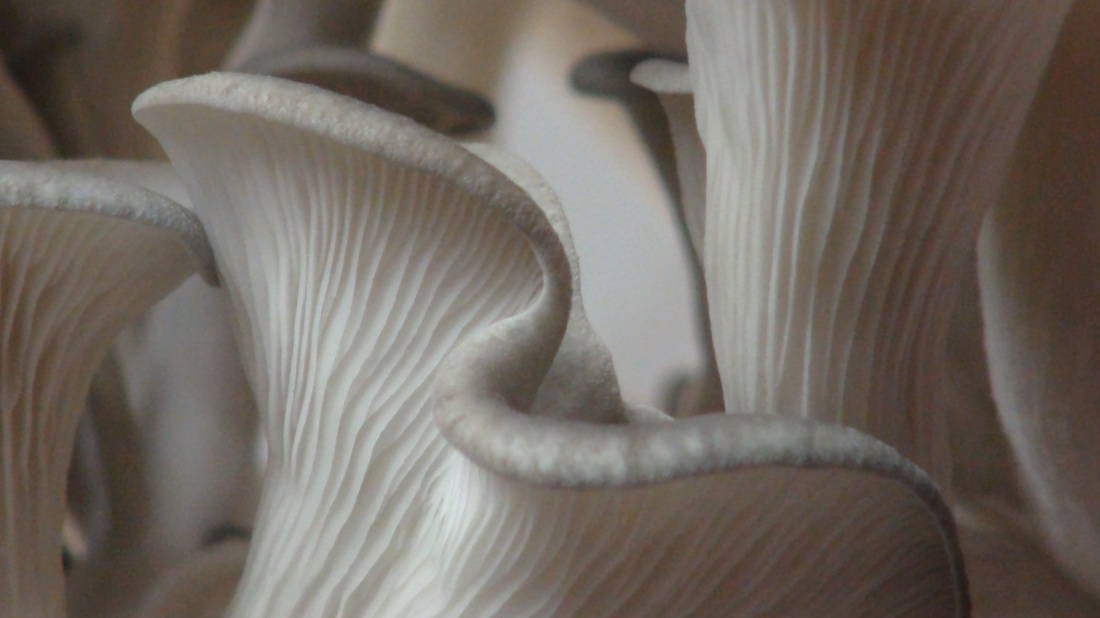
Blue oyster mushrooms are easy to grow, especially when growing on straw logs where they can rapidly produce big yields. Oyster mushrooms are also relatively well known and available, although you will rarely find fresh, good looking oyster mushrooms at most grocery stores.
This means that you might be able to demand a good price for your mushrooms.
Pleurotus species mushrooms do not take well to shipping long distances, so you might have an edge over bigger commercial growers. Check out your local scene and see if the price they demand will be worth your effort.
King Oyster Mushrooms

King Oyster mushrooms are also quite easy to grow, although they tend to grow better on supplemented sawdust than they do on straw. The best part about the king oyster mushroom is their long shelf life. Typically, a properly harvested king oyster mushroom will be sellable for up to two weeks, which is not common for most other gourmet species. Unfortunately, this also means that king oyster mushrooms are easily shipped long distances. Chances are that you will be competing with cheap commercially grown king oyster mushrooms from Chinese or Korean suppliers. However, these kings are generally grown with small caps and big fat stems. You could differentiate yourself by growing kings in a bright, low CO2 environment to produce a unique looking king with big caps and small stems.
Lion’s Mane Mushrooms
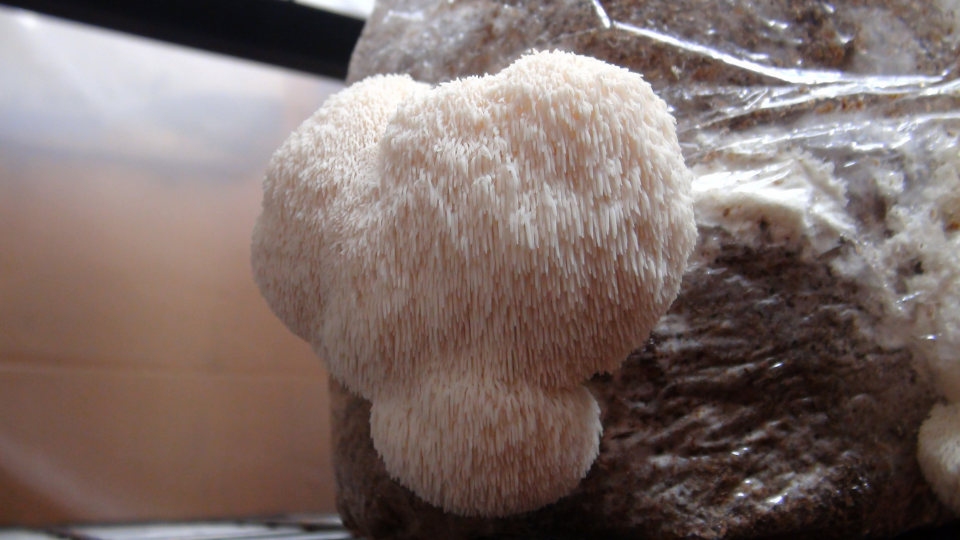
Consistently growing fresh Lions Mane Mushrooms might really set you apart from the crowd, as these mushrooms are not often sold to consumers from commercial growers. This is likely because there delicate teeth require careful handling and packaging. However, a small local grower might be able carefully harvest this mushroom and deliver it straight to the customer. Although these mushrooms are unknown to a lot of chefs and consumers, they are generally well liked when experienced and could provide a unique market opportunity.
Shiitake Mushrooms
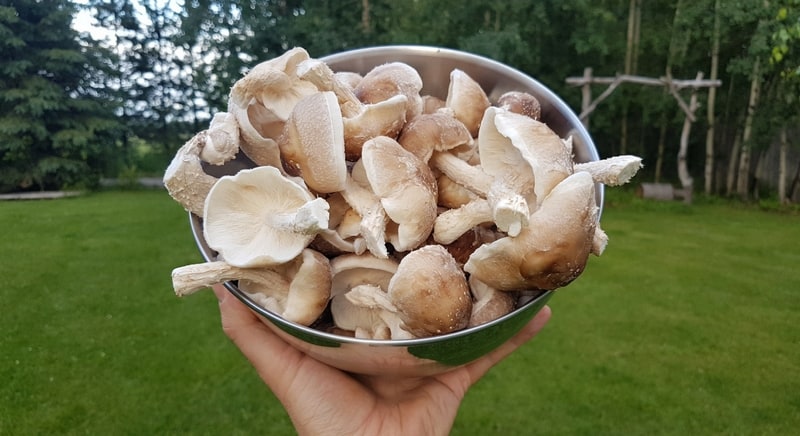
Shiitake mushrooms are a little more difficult to grow, and are maybe not the best choice for the beginner mushroom farmer. However, if you can properly grow these mushrooms, there is likely to be a reasonable demand. Shiitake mushrooms are well known and well liked, so you should have no trouble trying to promote your product. Again, you are likely to have to compete with large commercial sellers, so be sure to check out what your market is like before going all in with shiitake.
Harvesting and Storage
No matter what mushroom you decide to grow, you are going to need to properly harvest and store before delivering it to your kitchen or your customers. Harvesting your mushrooms is rewarding, but it is also a pretty time consuming process which takes a while to start doing efficiently.
You will want to treat harvesting your mushrooms like any other aspect of food preparation.
This means only using clean tools and equipment, wearing clean clothes and gloves, and having a wash sink nearby. Ensure that your knife is cleaned often, as it doesn’t take long for harmful bacteria to grow on your knife, which could get passed on to your final product. You also might want to consider wearing a really good mask, especially when harvesting Pleurotus species oyster mushrooms.
It is common for mushroom growers to develop an allergy to the spores of these mushrooms, which can get worse over time. Some growers choose not to grow pleurotus for this reason. Wearing a good mask when in the grow room is your best defense against developing this allergy.
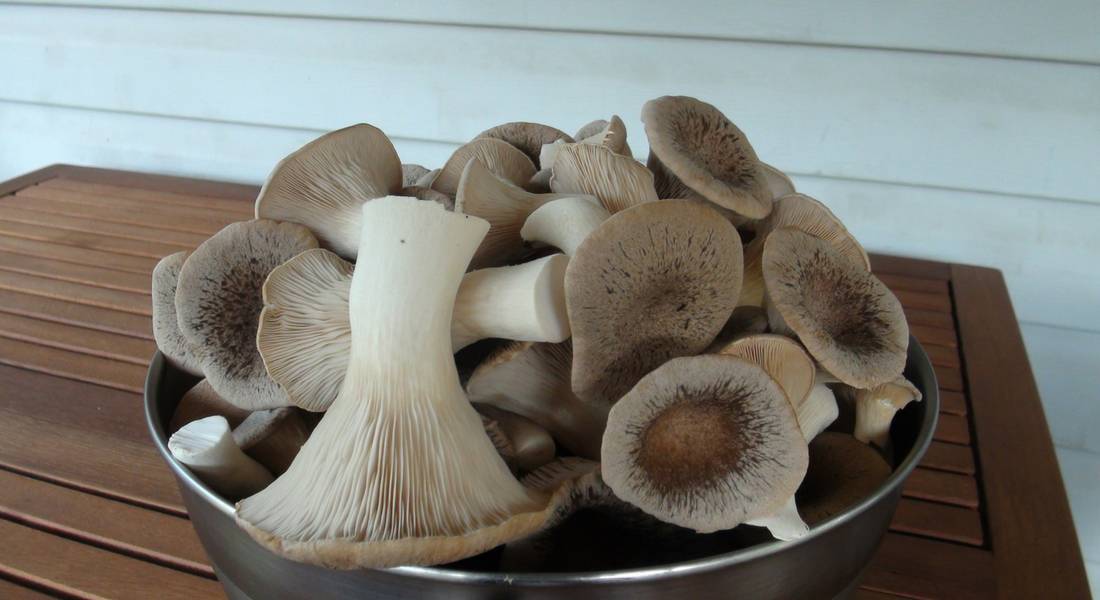
Generally, harvesting involves cutting the mushroom fruit body off at the stem and removing any remaining substrate material. This is where you can really shine above your competition, by making sure that you are only sending your customers cleanly harvested, high quality mushrooms. Generally, you will want to have a scale nearby when harvesting so that you can weigh your mushrooms to get an idea of your yield and how much you are actually producing.
Often, substrate blocks and straw logs can be harvested multiple times, with diminishing returns and higher chances of contamination after the 2nd or 3rd harvest. When the substrate is finally spent, you will need to properly dispose of it in a compost pile or similar.
This is a huge consideration that is often overlooked by new growers, as the amount of spent substrate can become a large pile (and large problem!) rather quickly. You might need to work something out with a local land owner in order to properly dispose of your substrate.
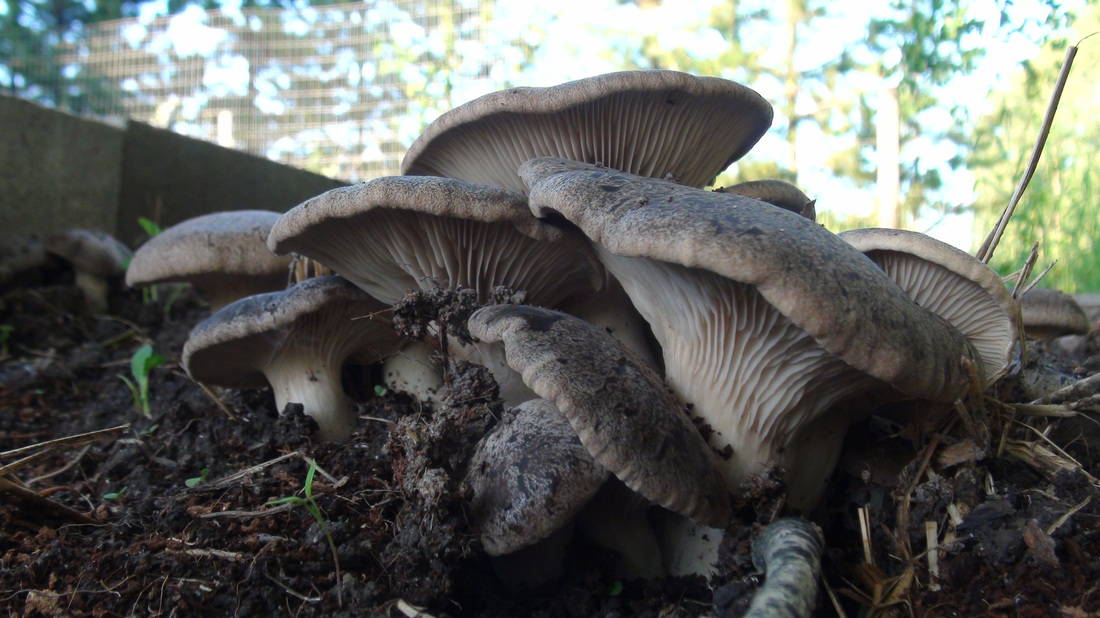
Cost Considerations
If you are taking mushroom farming from hobby to business, you need to consider what it is going to cost and whether or not it’s going to be worth it. Doing a 100 page business plan doesn’t really make a lot of sense either, as there are just too many variable to get an accurate picture of success, but you should at least have a basic idea of what is involved.
The cost of a mushroom farm is highly variable and will no doubt depend on your individual situation. Do you already own a building? Are you going to be operating out of your house? Are you planning on building a lab or just buying grain spawn?

Although it is not wise for me to be specific about costs, I will suggest that you need to add at least %50 percent to what you first think it will cost. There are so many little things that you won’t even think about that will end up being a substantial cost.
The big expense items will be building materials for setting up your grow room, lab, prep area and any other areas that you want to set up. As for equipment, your big costs will be sterilization equipment, a method of pasteurization and a pre-built or homemade laminar flow hood.
You may also need a blower fan, humidifier and other HVAC equipment, depending on your set up. And don’t forget about consumables, like gloves and alcohol, grow bags or poly tubing, substrates and grain and, of course, your mushroom cultures.
As you can imagine, setting up a mushroom farm can be quite costly, but for many people, the idea of building their very own farm and running the show makes every penny worth it.
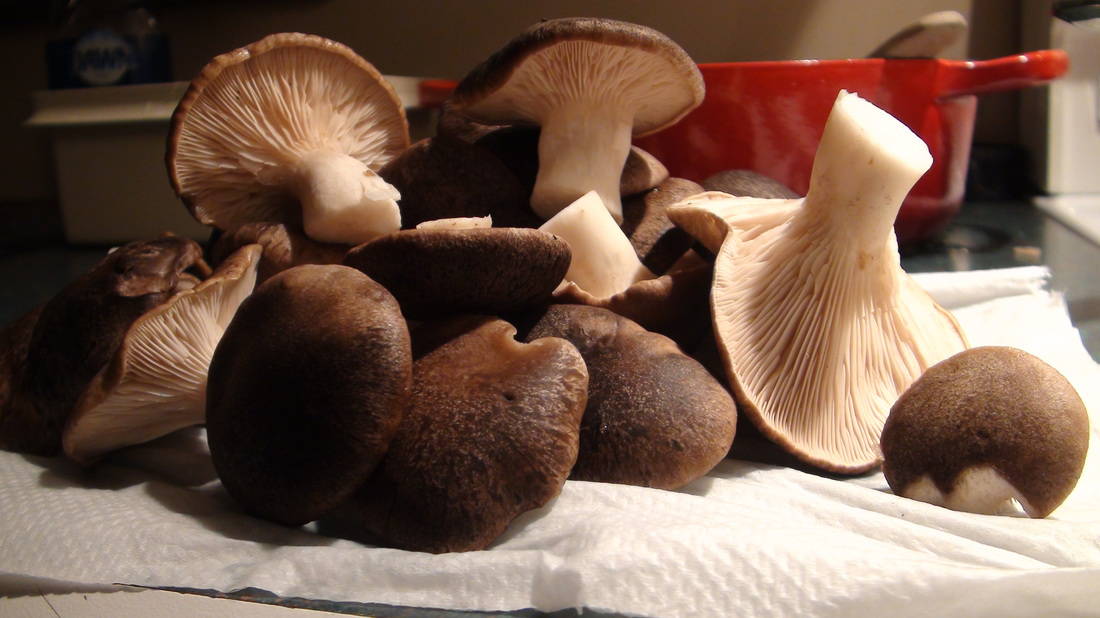
Local Regulations and Setting up a Business
This is my least favorite part of starting up a mushroom farm, the legal stuff. Depending on where you want to grow, you will almost certainly have to deal with your local county or city regulations, especially if you are setting up to grow out of your own home.
You will need to consider zoning laws, and may need to obtain a special license. Your local gatekeepers are likely to have a lot of questions about your farm, so be sure you are armed with all the right answers to quell their fears.
The big concerns with a home mushroom farm from the point of view of a regulator will be increased traffic on your property, potential noise and smells, disposal of waste, and potential damage to the building from high humidity. You will have a good shot at gaining permission for your farm if you have a well thought out plan that can address these concerns.
You also have to consider potential liability concerns. Basically, since you are selling food, there is always the possibility that someone could get sick from your mushrooms. Even if you are sure your mushrooms are always top-notch, it could be difficult to prove if someone ever tried to sue you. This is unfortunate, and ugly, but it’s the world we live in, so it’s best to protect yourself.

One way to do this is to get liability insurance for your mushroom farming business. A specialty broker should be able to work something out with you that will be quite reasonable. Phone around and get opinions from as many brokers as you can if you are going to go this route.
The other thing you should consider is to set up a Limited Liability Corporation (LLC). This will be an entity in with which you operate your business, and can protect your personal assets should you ever be sued by an unhappy customer or chased down by creditors. It is also helpful to have an LLC if you want to sell to grocery stores, or when you are ready to really grow your little business.
We may be getting well ahead of ourselves here, but these are all things that need to be considered if you are thinking about setting up a real farm.
Selling Mushrooms
Once your farm is firing on all cylinders, you’ve protected yourself from liability and you’ve grown some primo mushrooms- it’s time to get out there and sell ‘em!
There are plenty of different options to reach your potential customers. A common way to start is to set up a small booth at the farmers market. This will allow you to cheaply gauge market reaction, see what your customers like, and see where you should set your prices. The only downside to selling at the farmers market is timing.
Unless you have your farm entirely dialed in, it will be difficult to have your mushrooms perfectly ready for harvest the day before the weekly market. Because of this, you often have to either pick your mushrooms too early or too late, neither of which are good options when you want to put your best product in the hands of your customers.
Another option is to sell directly to chefs. This is where you need to develop great relationships and network throughout the restaurant scene in your community. Most chefs will be delighted to see “rare” fresh and healthy looking mushrooms from a local farmer. This is where you can likely demand fair prices for your best mushrooms.
Depending on where you live, you might be able to sell your whole crop directly to chefs on a regular basis. This saves having to set up a booth at the market, and there is no need to market directly to consumers, which some growers find appealing.
The biggest potential, of course, is getting your product directly into grocery stores. Unfortunately, grocery stores usually have some pretty high standards for minimum order quantities, delivery schedule and prices. Also, major chain stores will likely want to audit your operation to ensure it meets their standards for food handling safety.
Allow these regulations aren’t crazy, they can usually be pretty costly to implement. Here you will be competing directly with the big boys, so you will need to find a way to stand out. Building a brand and selling yourself as a “local” grower can go a long way towards swaying the customer. Grocery stores are likely not your first step when selling mushrooms.
You will likely not be able to compete on price or volume, but you might be able to offer more variety or a fresher product.
Find your edge.
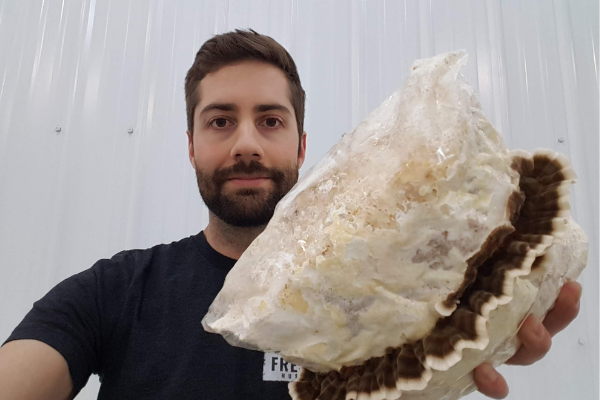
The Sky’s the Limit
So there you have it. You now know how to go about starting a mushroom farm! .
You can now call yourself a mushroom farmer!
Whether you try it for fun for a little while, or you aim to become a mega mushroom mogul, the destiny of your farm is fully under your control.
Keep in mind that mushroom farming is still just that- farming. It’s hard work.
However, like any other type of farming, it can be extremely rewarding. You will have perfect days when a bumper crop rolls in right before Saturdays market, and you will also have awful days where the nasty green mold rears it’s ugly head and your entire harvest is fit for the pit.
Farming can be a roller coaster.
But it’s your roller coaster. With proper care and attention, and working towards an ever increasing skill set, you can start having more good days than bad days, and eventually be pulling off more mushrooms than you ever thought possible.
Mushroom farming is a journey. Where will it take you?
Thanks for reading and good luck!
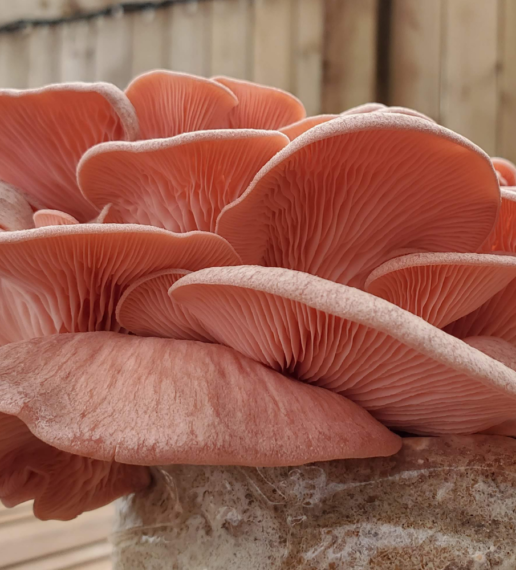
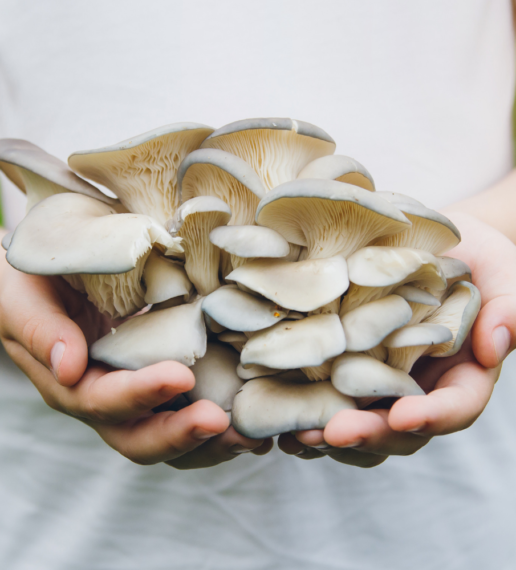
Best article on this subject I have seen so far. I will be continuing my research but would like input on the cost of setup and operation of a small scale (400 sq. ft. or less) mushroom farm in my house or yard. Where can I find this information for northern California.
Thanks for reading! I am glad you enjoyed the article. The cost of your project will depend on so many different variables that it is hard for me to offer much input to your specific situation. My best advice would be to start growing on a hobby scale, which should give you a better idea of what type of mushrooms you want to grow, what method of growing you want to go with and what kind of environmental conditions you need to replicate for your area. Also, much of the cost of a mushroom operation is labor, and your time will likely be one of the largest investments.
Let me know if you have any more specific questions.
Best of luck with your grows!
Do you have a fan blowing fresh air in?
Hi milly!
Yes, if you have an enclosed grow room you should definitely be blowing in fresh air. You will need multiple fresh air exchanges per hour. Keep in mind you will also need a way to increase the humidity, as the fresh air your blowing in will likely have a lower humidity than the rest of your grow room.
Wow thanks for this article Tony. This was really the most information in one place I could find. I am struggling however to find anything related to the amount of spawn you need to put in your growing bag vs the amount of yield you can presume at harvesting. The closest I could find was a study done in china I think where they I concluded approximate 15g spawn yielding first harvest 500g of mushrooms but the study wasn’t specific to grams of mushrooms being harvested. So I figured Tha this is maybe something not at all predictable? Have you found a relationship between the amount of spawn vs the yield in your years of mushroom farming?
Hi Monique! Thanks for reaching out! There is not really a direct relationship between the amount of spawn used and the end yield. The mushroom culture will use the bulk substrate in much the same way it used the grain in the grain spawn- to grow and fully colonize whatever it can until it is time to fruit. Adding more spawn to a bulk substrate is almost the same as adding extra supplementation, except for the added bonus that it is already colonized! A higher spawn rate is generally helpful in allowing the substrate to colonize faster, and decreases your chances of contamination- which will increase your overall yield over time. I would suggest starting with a spawn rate of 5-15% the wet weight of the substrate. For example, if you are making a 30lb straw log, use about 3 lbs of spawn. Hope that helps!
Thanks tony. It took me 5 months of 6 hours a day to find your site. The best one so far. Answers a lot of my questions. All but a few. I have a 17ft length , 9ft width, and 8ft height green house blue print I written up. I plan on using pressure-treated wood for the frame. I am in North Florida and it does get down to about 40° F at times. The hottest I would say during the day would be 95° F . What would be good material to insulate from the inside to the outside? I plan on growing Pearl oyster mushrooms. Any decent priced AC machines?
Hey Micheal! Thanks for reaching out! I’m happy you find the site useful. I think that even though you are using treated wood you should try and isolate the inside walls from the frame, either with poly or FRP paneling. If the frame of the grow room is protected from moisture, you could just use standard fiberglass or roxul insulation. Even styrofoam panels could work fine. I am not sure about the A/C, I have used portable units before that work great- and are reasonably priced. Check your local hardware stores(Lowes, Home Depot, or even Amazon) They are usually rated for the square footage of the room. With a 17 x 9 room you should easily be able to cover that with one unit. You can place it in the grow room only when you need it. You could also consider growing Pink Oyster mushrooms, as they are much more heat tolerant. All the best!
Hi!
My name is Lulu Urmenita, from Republic of Palau. I read about your article of mushroom growing and cultivation. I am very much interested. How can I have the spawn for Oyster Mushroom – white and yellow variety. Please let me know.
Thank you.
Hi Lulu!
Thanks for reaching out! AS of right now, we are only able to ship to USA and Canada- but I will let you know if that changes anytime soon.
All the best!
Tony
Contact,’ What the fungus’, about who might ship to you
Thank you for a great article. Apart from your excellent advice, which is clearly based on experience, the tone is very encouraging. Thanks for the advice. We shall be coming back to your site as soon as we buy our mushroom growing tent (about 9sqm).
We are aiming to start small-scale near Cape Town, South Africa and are really looking forward to making a family business of it.
Thanks for the kind words! Best of luck- good idea to start small, 9 sqm should definitely be manageable.
Thanks for the excellent article. I am wondering how often you should mist your mushrooms if you are able to keep the humidity up to 80 – 95% ? Lions Mane, King Oyster and Shiitake specifically.
Thank you for any help.
Thanks for reaching out! It really depends on what conditions are in your area. If where you live is hot and dry you may need to mist all day- but in most cases, simply misting 2-3 times a day is sufficient. Lions Mane shouldn’t be misted directly because it can cause the fruits to brown. Shiitake’s can handle lower humidity pretty handily. Hope that helps!
Hi Tony, fantastic article and congratulations on a amazing website. I am new to mushroom growing and very pleased I found your website. I look forward to spending the time reviewing all the info. In regards to Best Mushrooms to grow, are you able to provide some general guidance on which mushrooms are betted suited to longer shelf life in respect to cool room storage and transportation to markets etc. I live approx 6 hrs from a primary market in Sydney Australia and believe this to be a important aspect in my business planning. For example, I have read that King Brown mushrooms are “have a long shelf life”
Probably a difficult question to answer as I assume there are many variables but if you could point me in the right direction I would be very appreciated. Sincerely, Paul
Hey Paul, thanks for reaching out! I am happy that you like the site! For longer shelf life, I would consider the Shiitake and the King Oyster. Both can last up to two weeks if treated correctly, especially if they are harvested young. Here in Alberta, we can even buy King Oyster that has been shipped all the way from Asia, in not bad shape. Other varieties, like Pink Oyster, Blue Oyster, Yellow Oyster ect. have a really short shelf life, and are generally too delicate to transport long distances, so I would stay away from those. Lions Mane can last a little longer, but you need to handle it carefully.
Goo luck with your planning!
Wow!!!! I love this and I think I’m planning to start my project on October. Would you please tell me whether is easy to grow oyster, shiitake, reishi, button agaricus and portabellas. I have planned to use a greenhouse for this farming.
All depends on your situation. In general though, Oysters and Reishi would be the easiest, Shiitake are a little tougher, and Agaricus species are usually best left to the larger farms. Hope that helps! Happy growing!
Very informative site. Thank you for sharing your knowledge.
Can you answer a couple questions please. How do you control humidity so as not to be a problem if growing in your home? These humidifiers pump a lot of moisture into the air and possibly create mold issues in the building.
When growing king oysters or any other oysters is it ever helpful to soak a colonized log in water and if so for how long? I have found on occasion that if I think my logs are too dry that injecting them with 50 ml of water often brings on a flush or boosts an existing flush. Your thoughts and comments are appreciated.
Hey j tho,
Those are some good points. Excess humidity can definitely be damaging to your home. Consider getting a hygrometer to measure the relative humidity in your home to ensure it is not getting too high. If you are only growing in a small 4 tier chamber or likewise, it would take a lot of additional humidity to have an adverse affect on your home, so most of the time it shouln’t be a concern. If you have a larger grow however, with humidifiers running constantly, you may consider pumping the excess humidity outside.
Hi from Liverpool England!
I have researched and read for weeks but can’t find my answer, maybe you can help. Can you give me any insight as to chemical vs heat pasteurization of substrates, I like the idea of low cost methods like lime or bleach.
Cheers
Glen
To be honest, I haven’t really experimented much with bleach or lime pasteurization methods- but they are definitely known to work quite well. Perhaps I will run some experiments in the near future. Stay tuned! At the moment however, I am a big fan of simple heat pasteurization.
Tony, Thank you for your very informative article. Im looking to relocate from Florida to Ohio in the next several months to be closer to the Grand kids and plan to buy a small farm to take me from semi retired to retirement to farm full time. My question, Where can I find the lightning requirements for the different species of mushrooms you reference in your article?
Hey Rick!
Sounds like a good plan!
You can check out Paul Stamets book “Growing Gourmet and Medicinal Mushrooms”, there is some lighting requirements listed for each species, although there is no substitute for trial and error!
Hi, Tony! I really enjoyed the article. I was wondering: instead of blowing in fresh air from outside the grow room, would it work to have plants growing beside the mushrooms, to produce oxygen and remove the carbon dioxide?
Thanks!
Very much interested in starting a commercial mushroom farm.
Hi tony, Do you think that 20.000usd could be enough to build up smth from scratch? /shipping container, simple wooden cabin, those kind of greenhouses, etc)? Thanks for the answer. great article!
Glad you love the article! It’s hard to say, that sounds like a reasonable amount of startup funds but there are so many variables that are going to change what it takes depending on your situation.
Hi Tony – great stuff. If I’m building a greenhouse outdoors specifically for fruiting on shelving units, should I be concerned about a grass floor? Or should I cover the grass floor with plastic sheeting before putting in the shelves? I’m in california in a temperate environment for growing year round.
Hard to say for sure, because I don’t know about bugs, and other issues that might crop up. Also mowing the grass could be an issue 🙂 best is obviously concrete floors, but just to see if that kind of set up will work in your environment is a big investment. I would give it a try and see how it goes!
Hi Tony,
1. I was wondering if one can get respiratory problems when growing lion’s mane only.
Hey Jimmy!
I don’t know for sure, Lion’s Mane will definitely release spores. Whether or not they are potentially harmful or ingratiating is up for debate, and I can’t point to any research that says either way. It seems though that most problems people experience are allergies to Oyster spores specifically. I have never heard of issues from LM or Shiitake ect.
Great and very informative.
Hi Tony
Excellent Website glad to have found it
Glad to have you here!!
Thanks tony
This article has answered most of the questions I had I now feel ready to start
Hi I might be asking a dumb question but if I’m not selling the mushrooms then do I not need a license in California? I’d like to grow some for when I cook meals and stuff, make it a hobby.
This has been a very interesting read. Thank you for sharing your input and your valuable thoughts around mushroom farming. My interest to prepare and start this project is growing everyday and it is very important to know what to expect head of the game. Thank you
Excelente explicacion. Accesible para todos. Gracias. Saludos
Thank you for the information, it is very interesting! I’m thinking in starting a small project hopefully soon… just wondering if this methods will work for other species we normally call champignons (Button mushroom)
You guys at Freshcap have outdone yourselves explaining every detail of this world of mushrooms which is incredibly new to me. Thank you so much for so much information.